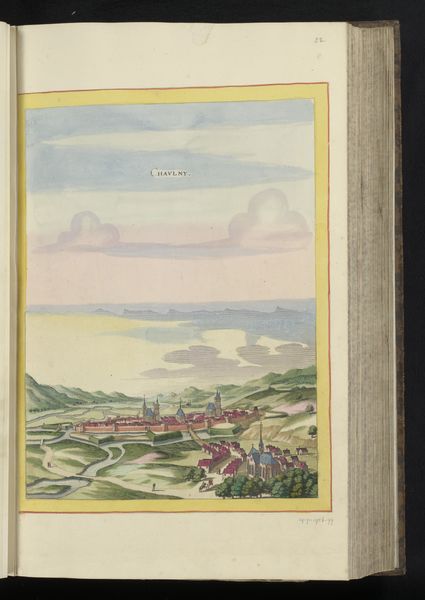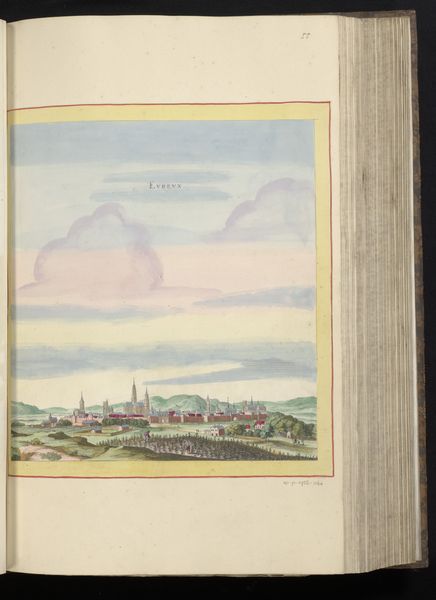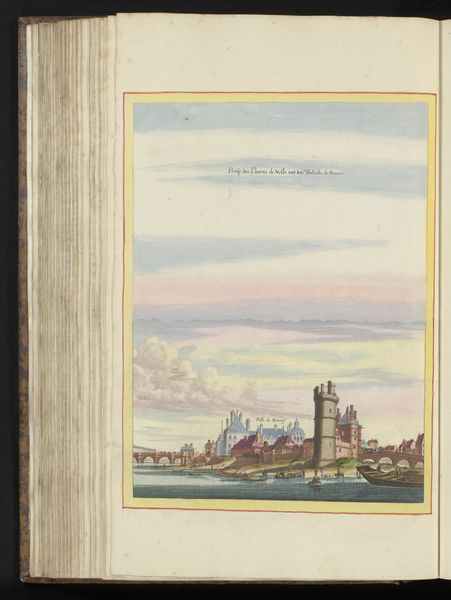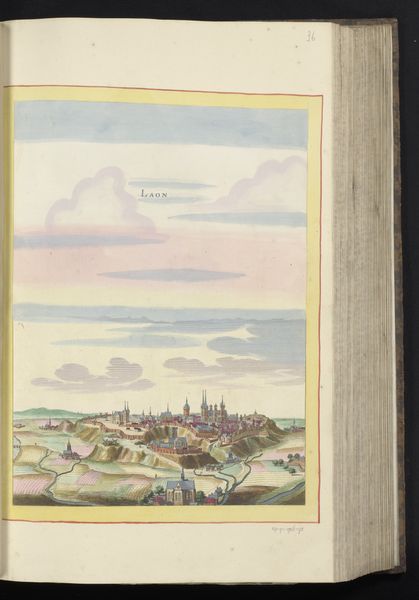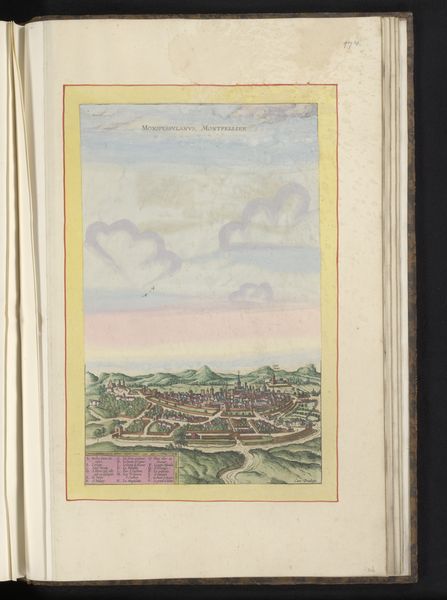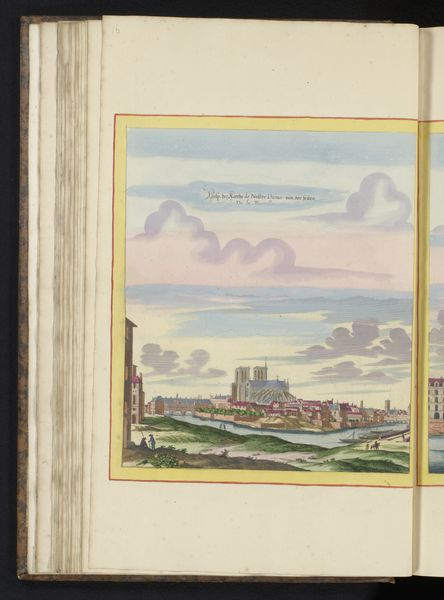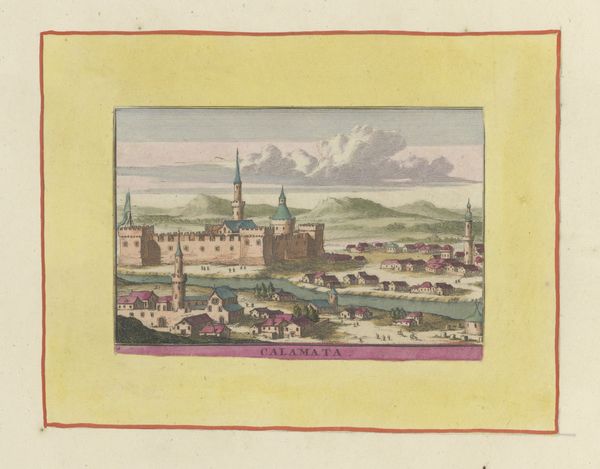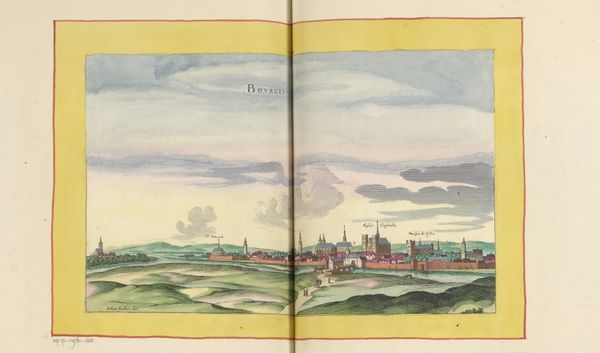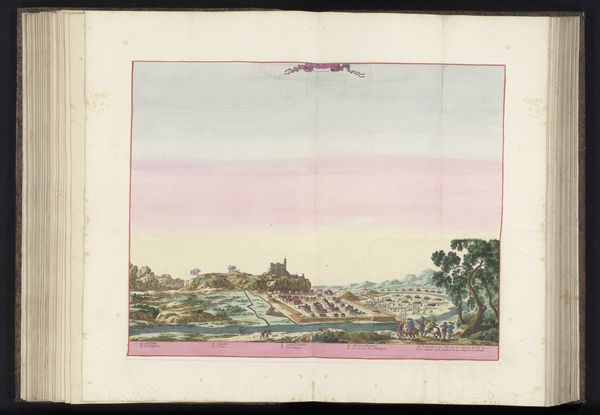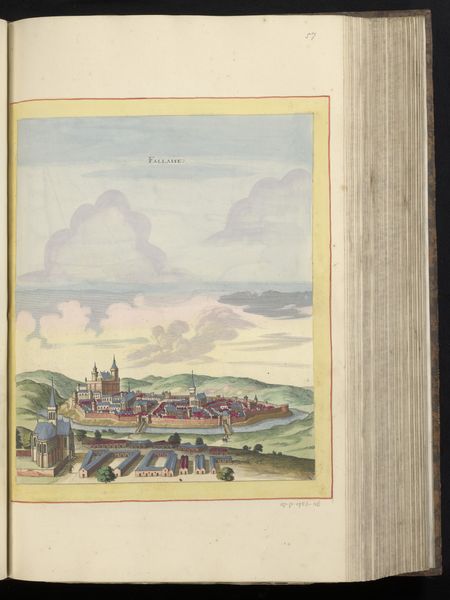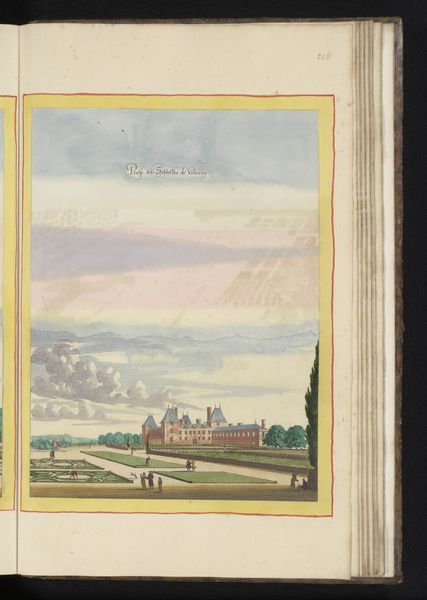
painting, paper, watercolor
#
baroque
#
painting
#
landscape
#
paper
#
form
#
watercolor
#
coloured pencil
#
line
#
cityscape
#
watercolour illustration
#
realism
Dimensions: height 372 mm, width 278 mm, height 536 mm, width 330 mm
Copyright: Rijks Museum: Open Domain
Editor: This is Matthäus Merian's "Gezicht op het kasteel en de vesting van Coucy," created in 1655 with watercolor on paper. I'm struck by its sense of distance. The walled city looks so far away, almost dreamlike against the pastel sky. How do you interpret this work? Curator: This cityscape, made with watercolors on paper, invites us to consider power and representation in 17th-century Europe. Merian isn't just showing us a castle; he's showcasing a symbol of authority at a time of significant political and social upheaval. Look closely at the meticulous detail in the fortifications—what message do you think that conveys to the viewer, especially considering the role of cityscapes in projecting a particular image of the city and, by extension, its rulers? Editor: I see. The detail emphasizes the strength and control the ruling power has over the landscape. It almost feels like propaganda. Is that a fair assessment? Curator: Precisely! Consider how these images circulated and the audience they were intended for. Were they meant to impress foreign dignitaries, reassure local populations, or serve some other purpose tied to the maintenance of power? What is omitted from the image is equally important to explore, no mention of those subjugated or oppressed. By unpacking this, we can start to see how art functioned within broader systems of control. Editor: That's a powerful point. It shifts the focus from simply admiring the aesthetics to understanding the artwork's role in shaping social narratives. I will think of that from now on. Curator: Exactly. By engaging critically with art history, we expose both explicit and tacit messages within artworks and unpack power relations.
Comments
No comments
Be the first to comment and join the conversation on the ultimate creative platform.
